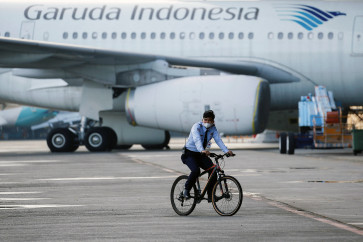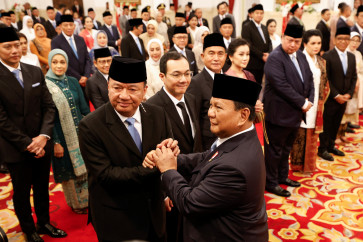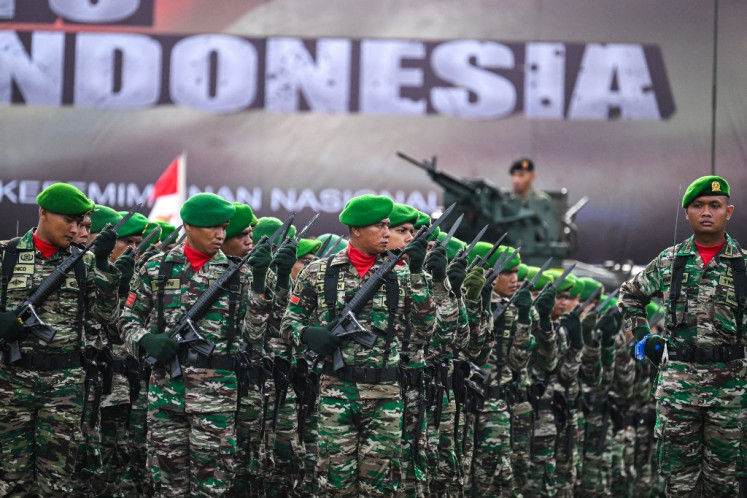Garuda optimistic for 2012 after booking reduced loss in Q1
Indonesia’s flag carrier PT Garuda Indonesia recorded a net loss in its bottom line in the first quarter of this year due to growing operating costs, but remains optimistic after reducing the loss from the same period a year earlier
Change text size
Gift Premium Articles
to Anyone

I
ndonesia’s flag carrier PT Garuda Indonesia recorded a net loss in its bottom line in the first quarter of this year due to growing operating costs, but remains optimistic after reducing the loss from the same period a year earlier.
In the January-March period, Garuda booked a net loss of US$10.71 million, compared with a $19.11 million net loss in the same period last year, according to the company’s financial report published on Monday.
A rising number of passengers and flights saw Garuda spend $724.28 million on operating expenses in the first three months of the year, versus $613.74 million in January-March of 2011.
That turned rising revenue - by 23 percent to $717.45 million - into an operating loss of $6.83 million, although it was an improvement from $30 million in operating losses in the first quarter of last year.
“We predict a better performance in the coming quarters and the whole year because our loss [in the first quarter] is smaller,” Garuda’s finance director, Handrito Hardjono, told a news conference after the figures were announced.
Garuda carried 25.33 percent more passengers from January to March than it did in the same period last year, with 4.6 million people flying with Garuda mostly to domestic destinations during the three-month period this year. Last year, Garuda flew 3.7 million from January to March.
Along with an increased number of passengers, Garuda also saw a 16.68 percent increase in cargo, carrying 65,488 tons during the first quarter.
“From year to year, the first quarter is always a loss period. Therefore, we applied various strategies to improve our first quarter performance, including offering competitive fares,” Garuda’s president director, Emirsyah Satar, said.
The deals increased Garuda’s passengers for domestic routes by 25.5 percent from January to February, compared to an average growth rate of 11.7 percent booked by other nationwide airlines.
With more passengers, Garuda’s flight frequency also rose by 23 percent to 35,144 from January to March this year, from 28,952 in the same period last year.
Domestic-flight frequency stood at 24,750 in the first quarter this year, while its international-flight frequency was at 6,029.
The seat load factor (SLF), which measures the occupancy rate of airlines’ flights, also increased to 72.79 percent in the first quarter of the year compared with 71.69 percent in the same period of 2011.
Shares in Garuda closed at Rp 670 (7 US cents) apiece on Monday, tumbling by 5.63 percent after surging 9.23 percent on Friday upon the announcement that a 10.9-percent stake in Garuda had been purchased by Trans Airways, owned by Indonesian business tycoon, Chairul Tanjung.
Garuda’s stock has jumped 41.05 percent so far this year on expectations of the stake sale and as investors expect the company’s finances to improve after buying fuel-saving planes that are supposed to ease operating costs.
The company plans to phase-in 22 new planes this year, 11 of which are earmarked for its low-cost wing, Citilink. After phasing out other ageing aircraft, Garuda will have 85 aircraft by the end of this year, while Citilink will own 20. That compares with 87 operating aircraft in its fleet last year.
—JP/ Raras Cahyafitri









